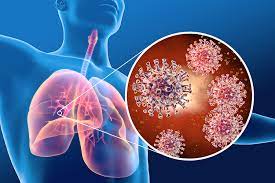As antibiotics face increasing challenges due to bacterial resistance, a study conducted by the University of Basel and University Hospital Basel reveals the formidable hurdles posed by the persistence of antibiotic-resistant bacteria in individuals, especially those with pre-existing conditions. Published in the journal Nature Communications, the research sheds light on the prolonged presence of resistant bacteria in the body and its implications for recurrent infections.
Diseases such as pneumonia, urinary tract infections, and sepsis can turn fatal without effective antibiotics. Some bacteria, however, have developed the ability to dismantle beta-lactam antibiotics, rendering them ineffective. Once a patient’s body is colonized by these resilient bacteria, they can endure for an extended period, leading to repeated infections, as highlighted by Professor Sarah Tschudin Sutter’s research group.
The study spanned over a decade, analyzing multiple samples from more than 70 individuals, particularly focusing on older people with pre-existing conditions. The primary objective was to understand how resistant Klebsiella pneumoniae and Escherichia coli bacteria evolve over time within the body and how they differ in various body parts.
DNA analysis revealed that the bacteria quickly adapted to the conditions in the colonized areas of the body, but underwent minimal genetic changes afterward. Remarkably, resistant bacteria were still detectable in patients up to nine years later, turning them into reservoirs for these pathogens.
Dr. Lisandra Aguilar Bultet, the study’s lead author, emphasized the implications for treatment decisions, stating, “This is crucial information for choosing a treatment.” Patients previously infected with resistant bacteria face a heightened risk of antibiotic failure in subsequent treatments, making it essential to tailor therapies accordingly.
Moreover, the research identified instances where bacterial strains of the same or different species shared identical genetic resistance mechanisms through mobile genetic elements. The likely explanation is the transmission of these elements between bacterial strains.
Professor Tschudin Sutter highlighted the significance of these findings in hospital settings, where protective measures are implemented for patients with a history of resistant bacterial infections. However, in everyday life, reducing the risk of pathogen transmission remains challenging.
The study provides a valuable foundation for future research, aiming to analyze factors in bacteria and patients correlating with the duration of colonization and the progression from colonization to infection. Understanding the genetic diversity of bacteria over time is essential in developing strategies to address the persistence of antibiotic-resistant strains and mitigate associated health risks.












